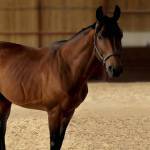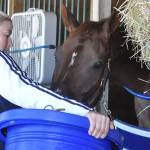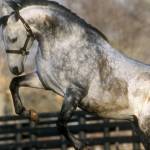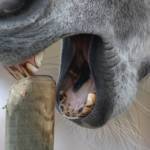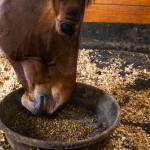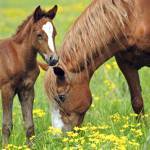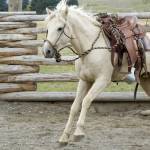Pony Clubs Bring Horses and Children Together
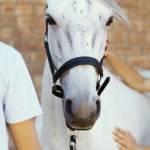
Generosity, patience, compassion, and sportsmanship are all traits humans can forge from a close relationship with horses. Cultivating these characteristics and many more like them is the core goal of a unique organization that has nurtured the love and knowledge of horses in young people throughout the world – Pony Club. As a leading equestrian organization, Pony Club has brought together legions of children and their adult mentors with the horses that have had lasting impacts on all of their lives.
The Pony Club story began in England in 1928 when members of the Institute of the Horse, an association that regulated equine sporting events throughout the country, developed paperchases and gymkhanas for children to foster riding as a sport. The competitions were so enthusiastically received that the following year the Institute designed a more formal junior branch of its program to be known as Pony Club. Along with encouraging riding, the designers hoped to provide children with the opportunity to receive more formal instruction in all aspects of horsemanship.
Much like England’s foxhunting clubs, Pony Club was divided into districts, and each was governed by a commissioner. The commissioners were assisted by a local committee and remained in close touch with members of their local hunt. Harry Faudel-Phillips, a member of the Institute of the Horse, was named chairman of the Central Committee of Pony Club. He was assisted by T.H.S. Marchant and Mrs. Hugh Corbett in developing a constitution for the club and dividing the country into districts that would have their own branches. Their organizational skills produced a program that was immediately successful, and, in large part, is intact today with very few revisions.
By May of 1930, over 700 young people had applied for membership in the new organization, and The Royal Calpe Hunt Pony Club in Gibraltar became the first of many foreign affiliated branches to be accepted. Today Pony Club is the largest association of young riders in the world with over 110,000 active members. England alone has over 360 branches of Pony Club, each with a full program of rallies and competitions, and other countries from Antigua to Zimbabwe have developed affiliated branches.
Each country’s Pony Club has its own distinctive character that caters to the riding opportunities in that part of the world. Some, like the United States, have grown to include over 600 individual branches that collectively have more than 12,000 members. All branches, however, follow the basic tenets of the original.
Membership is open to young people under 21 years of age. Members can participate without owning a horse, but they should have access to one if they are to progress through the different tests that may be asked of them. Some countries have “center memberships” for these children as opposed to branch memberships available to those who possess their own horses. All Pony Club members must pay an annual subscription fee. As with many sports, the membership dues are not the end of the financial commitment. The cost of the horse or pony, additional lessons, tack, and clothing should also be considered.
The objectives of Pony Club are very much the same today as they were in 1929: to encourage young people to ride and learn to enjoy all kinds of sports connected with horses and riding; to give instruction in riding and horse mastership and to educate members to look after and to take proper care of their animals; and to promote the highest ideals of sportsmanship, citizenship, and loyalty to create strength of character and self-discipline.
The methods used to promote these qualities range from organized competitive events to exchange programs, trail rides, hunts, and campouts. Members are also expected but not required to take proficiency tests that are designed as an integral part of Pony Club to give them the opportunity to learn progressively and to attain honors for exceptional performances. The tests are of graduated difficulty and are administered by branch officials. The most elementary test, the D Standard, is given to members who are at least eight years of age.
This test challenges the members to display a general knowledge of horses and to have achieved confidence in handling and riding a horse or pony. In England, the test involves a written component and mounted challenges. Other countries have adopted oral tests over written ones. This accommodation has been especially helpful to children with learning disabilities.
Members must mount and dismount correctly, hold the reins properly, and ride a horse or pony comfortably at a walk and trot. They are expected to read particular books and view videos on which they may be questioned. Subsequent tests require the members to display more advanced horsemanship skills and greater knowledge of the care and handling of the animals.
The ultimate challenge for members is the “A” rating. Those who pass it are recognized as having achieved the highest award presented by Pony Club. The test is given to members who are at least 17 years old and have successfully completed all of the preceding tests. The A Test is a comprehensive examination in horsemanship, requiring the member to display the ability to train young horses, handle mares and foals, and possess a thorough knowledge of stable management and horse health. Members must also be competent equestrians who are able to ride over fences at all paces, are capable of taking a horse or pony out hunting, in horse trials, or on long-distance events, are able to care for their mounts before, during and after these activities, and finally are able to ride intelligently with due regard for others in the country, with a knowledge of pace, distance, and discipline when alone and in groups.
Achievement badges can also be obtained by members who show proficiency in a wide range of equine-related activities from bandaging legs to identifying poisonous plants. These activities provide members with an opportunity to learn and achieve success outside of the rigorous testing requirements.
The adults who provide instruction for Pony Club members take their jobs very seriously. From the instructors who devote much of their time to training young equestrians to parents and other volunteers, a barrage of experienced adults is available to help guide the members.
Many other adults become involved in Pony Club activities when their own children are small and continue to work with young members long after their children have moved on to other pursuits. Some view their commitment as a way of paying back an organization that helped them through their formative years. Others enjoy the connection with horses and children. For the vast majority, it is a labor of love as financial remuneration is seldom offered.
The opportunities for volunteer involvement are even more numerous than the variety of equine competitions provided for Pony Club members. Mentors can participate as teachers, event organizers, and ground crews. Volunteerism is not limited to individuals. Companies like Kentucky Equine Research have become involved in supporting Pony Club by providing financial assistance and furnishing informational seminars and literature.
The United States Pony Clubs hosts international events at the Kentucky Horse Park in Lexington, Kentucky and sees a large number of volunteers that come every year to help set up the grounds, move fences, mow grass, and generally help wherever needed. Some of these volunteers are parents of past Pony Club members who continue to participate by taking vacation time from their jobs to help with the events.
Pony Club sanctions many different types of competitions; including dressage, show jumping, horse trials, polo, polocrosse, tetrathlon, and mounted games. The mounted games give the riders the chance to display courage, determination, all-around riding ability, and careful and systematic training of the horse or pony in conjunction with team members. There are junior competitions open to riders under 11 years of age and senior competitions for those 12 to 15 years of age. A younger rider may join the senior competitors if there are not enough members in the junior division to fill a team. This is a true team event, with five riders on each squad. The impetus is on working together as there are no individual events in this discipline.
Branch teams must practice together to build relationships and ensure their individual skills are combined to form the best team possible. This is unique in Pony Club competitions as in no other discipline must members train in direct contact with one another in order to succeed.
Not every club or even every region has a full complement of all seven disciplines in which its members can participate. Certain regions may have a larger number of riders interested in polocrosse, while others may concentrate their efforts in dressage or show jumping. A great deal of what is available to members is dependent upon the type of riding that is predominant in their area.
The tetrathlon was recently added to the Pony Club roster in some areas of the world. It requires sound practical competition horsemanship and general athletic ability. The athletes combine their riding skills with running, shooting, and swimming. Although it was originally introduced as a contest for boys, there are now separate competitions for boys and girls.
Along with area competitions, there are national and international events for every discipline. The International Mounted Games Exchange is one such competition that is held between Pony Clubs in Australia, Canada, Great Britain, and the United States, with the competition rotating yearly among these countries. Members compete for placement on the national team and the chance to travel to a foreign country. The Euro Pony Club consisting of 15 member nations and the Inter-Pacific Exchange between Canada, Australia, Hong Kong, Japan, New Zealand, and the United States provide additional opportunities for members to develop a wider appreciation for other cultures and languages and to make connections with peers in foreign countries.
The diverse experiences provided to members of Pony Club throughout the world have been the inspiration for Olympic equestrians, homemakers, politicians, and business leaders alike. Many attribute their successes in life to the firm foundation Pony Club helped cement. The outside of a horse may indeed be the best thing for the inside of a human, but the combination of horses, experienced mentors, and the opportunities both can give, may be the best childhood gift.

